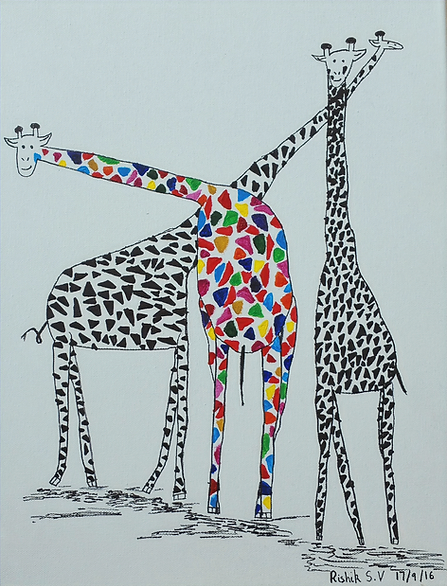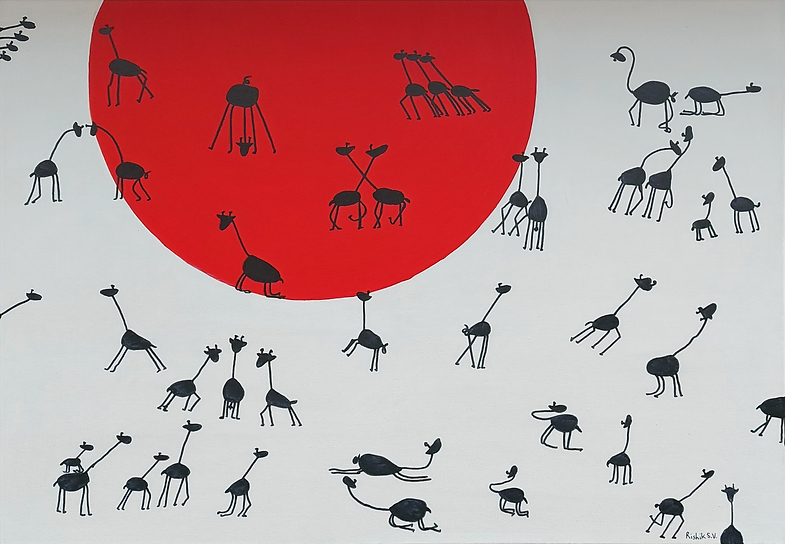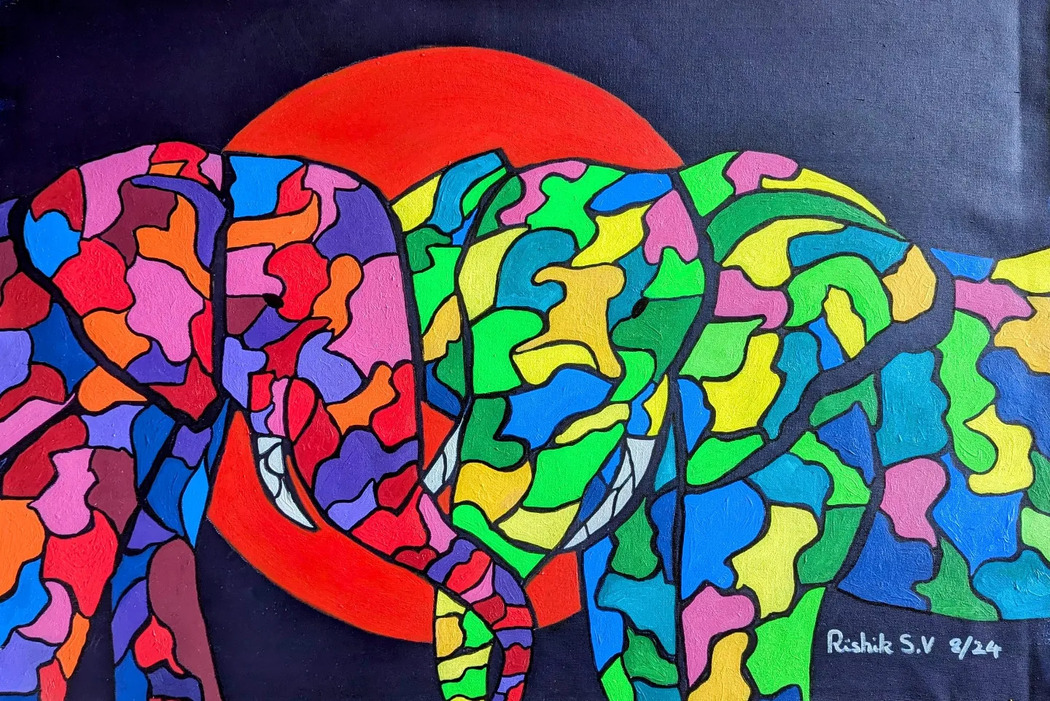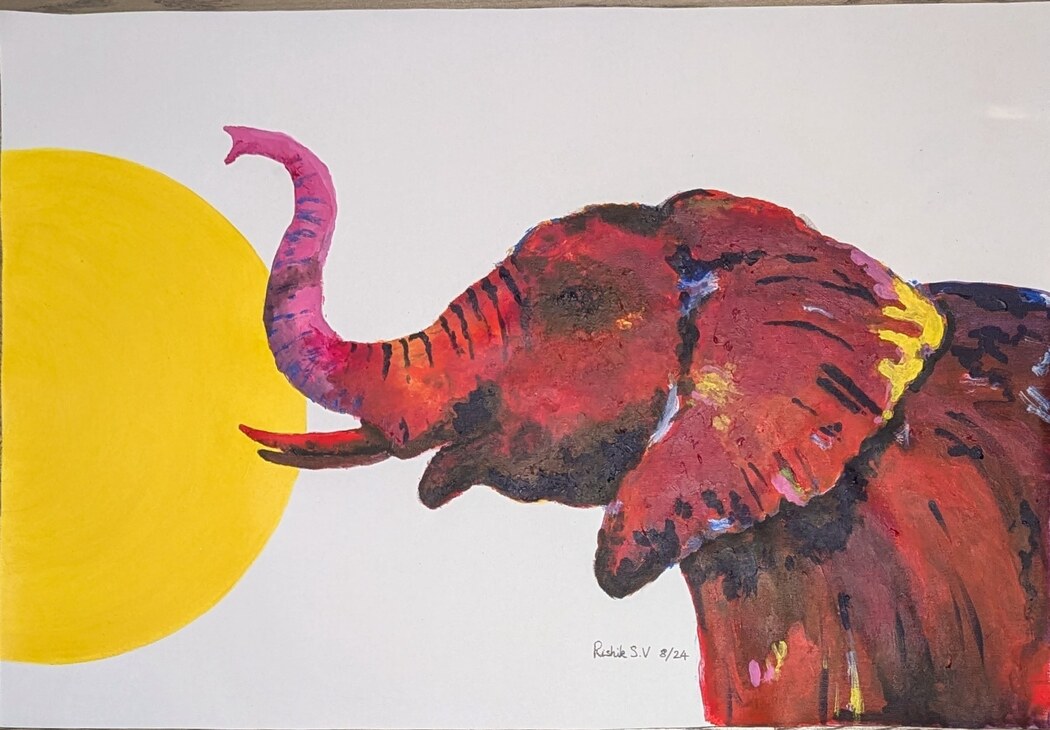Rishik Sen Vishwanathan
Year of birth: 2006.
Where do you live: United Kingdom.
Website | Instagram
You started drawing at the age of 4. What inspired you to start so early, and what keeps you motivated to create?
I used to doodle and draw all the time, and was lucky that my parents recognised this in me and put me in art classes at a young age. I always was particularly fascinated by animals and this fascination always manifested itself in my artwork! I keep motivated to create through my desire to keep experimenting, an endless exercise with art! To try and capture a subject using different techniques and from different perspectives is something I continue to love doing.
 Rishik Sen Vishwanathan | Colours in the Desert | 2016
Rishik Sen Vishwanathan | Colours in the Desert | 2016
Your work has been auctioned by various animal welfare organizations. How did you get involved with these organizations, and what impact does supporting wildlife through art have on you?
Thanks to the sage advice of my art teacher, I applied for the opportunity to auction my work at multiple animal welfare charities and was successful! From there, I have formed long lasting connections and have had the privilege to draw live, as well as exhibit my works to raise money for these organisations and their causes. Supporting wildlife through art has been a great honour and it feels most rewarding to see the work of these organisations, such as a visit I paid to the Wildlife SOS bear sanctuary in India, and the idea that I am contributing whatever little I can so they can continue their vital work.
You have a clear passion for drawing animals, especially elephants. What is it about elephants that captivates you the most?
Elephants’ features provide much for an artist to work with. They are unique with their tusks, large ears and majestic trunks. I always attempt to try and capture their huge presence on the canvas, as if it were in real life.
 Rishik Sen Vishwanathan | In the Limelight | 2016
Rishik Sen Vishwanathan | In the Limelight | 2016
In your latest works, you experimented with color in unconventional ways. Can you explain your artistic process for pieces like ‘By The Watering Hole’ and ‘In Conversation’?
I always find colour is a great way to provoke different reactions to the art and express different feelings with the same subject. In ‘By The Watering Hole’, I watered down my acrylic paints to create a more watercolour-esque blending of colours whilst still keeping the strength and boldness of the acrylic paints in darker parts of the canvas. ‘In Conversation’ was far more experimental- the idea of bringing the elephants’ characters to life by a sort of bright ‘jigsaw’ style appealed to me, particularly acting in contrast to the black background.
Do you prefer sketching from memory rather than from reference photos? What challenges or advantages does this method bring to your art?
I have sketched from memory from a young age. This has always meant that each project has to be thought through as I cannot research an image or use one of my own to inspire how I lay out my work. However, I always felt a sense of freedom through this method- I can use my imagination to create stories on the canvas.
 Rishik Sen Vishwanathan | Giraffe Silhouettes | 2015
Rishik Sen Vishwanathan | Giraffe Silhouettes | 2015
How do you balance your collaboration with charities and your personal artistic projects?
I find that the two work completely hand in hand. Commissioned work by charities often provides me with inspiration for personal projects. I have also been very fortunate that charities have been very happy to take lots of my personal project works for their auctions.





Leave a Reply